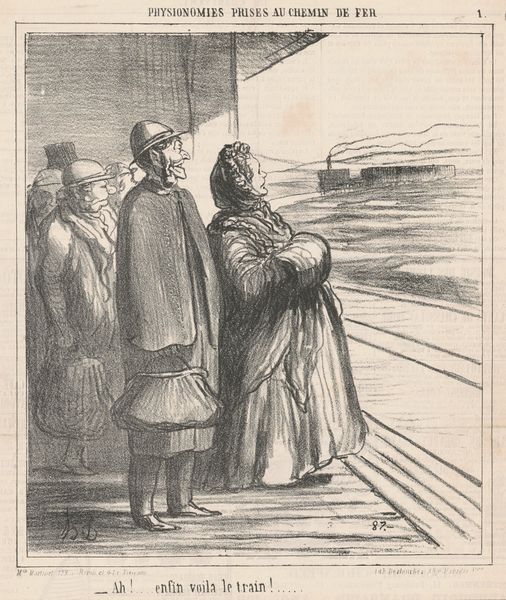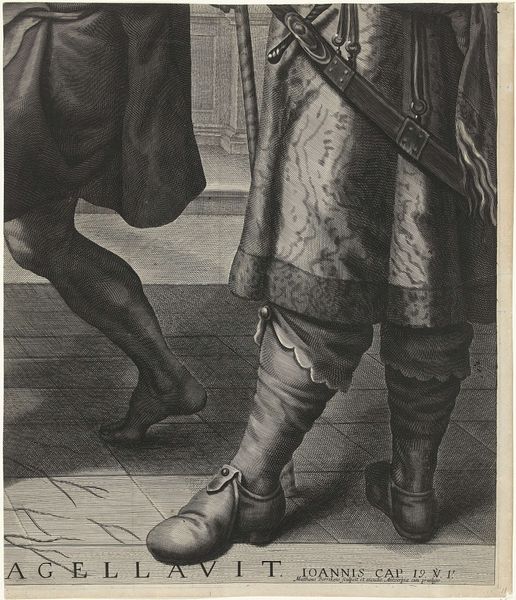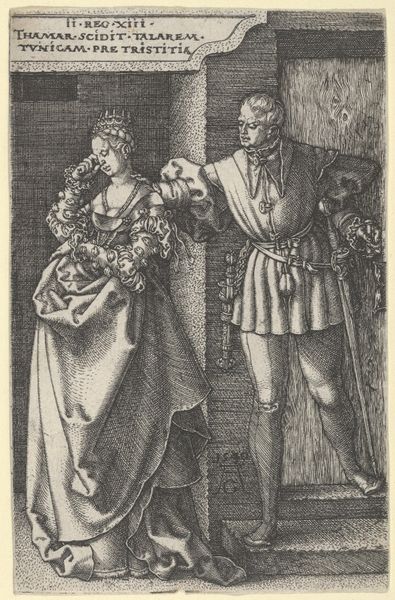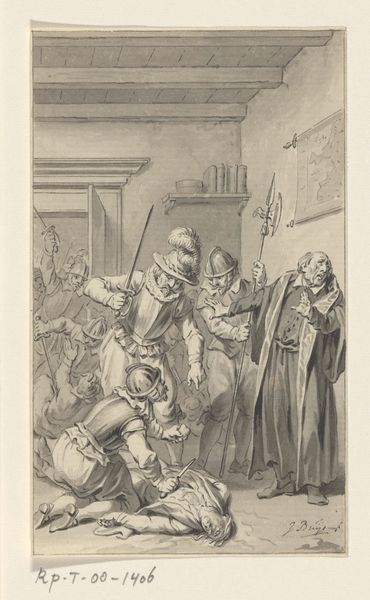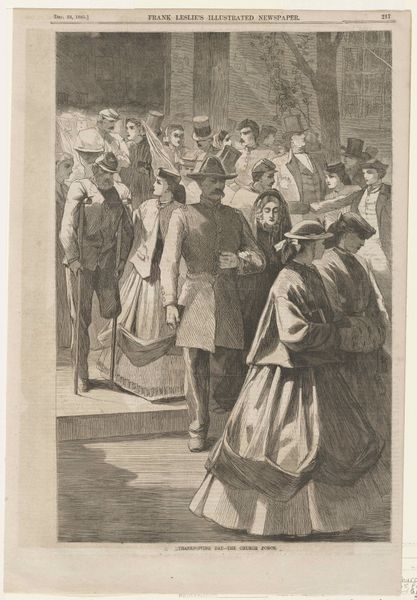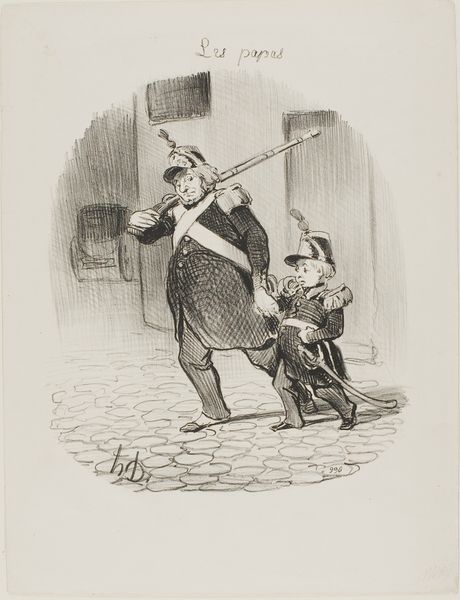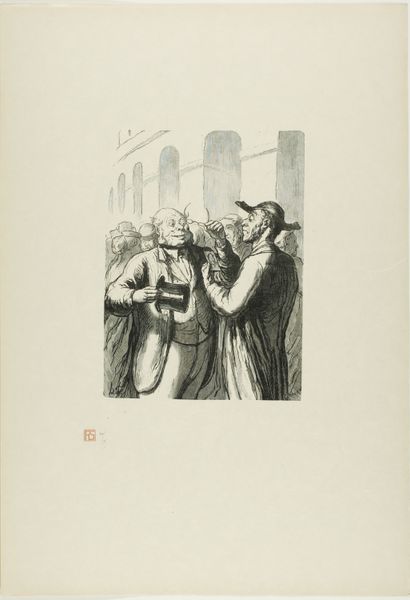
The Pharisee and the Publican (The Parables of Our Lord and Saviour Jesus Christ) 1864
0:00
0:00
drawing, print
#
drawing
#
narrative-art
# print
#
figuration
#
men
#
genre-painting
#
history-painting
Dimensions: image: 5 1/2 x 4 5/16 in. (13.9 x 10.9 cm) sheet: 7 5/16 x 6 1/16 in. (18.6 x 15.4 cm)
Copyright: Public Domain
Curator: Let's discuss Sir John Everett Millais's 1864 print, "The Pharisee and the Publican." Editor: My first impression is of contrasting postures: deep anguish versus proud display, all rendered in stark monochrome. The density of the shading really emphasizes the emotional divide. Curator: Indeed. Note the severe composition, divided between the Publican's shadowed isolation to the left, contrasted against the lined, ornamented Pharisee to the right. Semiotically, the starkness directs us to understand humility versus religious egotism, key to grasping the Gospel parable itself. Editor: And that parable offers a scathing critique of religious hypocrisy and self-righteousness. Millais situates this biblical narrative within a specific social and religious context, highlighting the power dynamics at play and perhaps even alluding to similar issues within Victorian society. Curator: Quite. Millais uses line and shadow masterfully to delineate psychological space. The slumped figure, the texture of rough cloth—they invite immediate emotional response even before the viewer apprehends the parable's message. Observe how the repetition of rigid vertical lines among the Pharisees conveys uniformity and judgement. Editor: It’s powerful how he visually translates the themes of judgement and humility into stark physical presences. The barefoot Publican is particularly evocative in signaling a sort of raw vulnerability, a deliberate distancing from the ornamented status of the others. It calls to mind contemporary debates around class, status, and performative piety. Curator: Agreed. He manages a high degree of formal control here. Notice how Millais manipulates the gaze, literally guiding us up toward those rigidly upturned faces. His engagement with the language of penitence as constructed through formal strategies remains highly compelling. Editor: Considering the visual cues—bare feet, bowed head, ornamented robe—it’s clear that Millais’ print carries both aesthetic weight and deep moral commentary relevant even today. It prompts reflections on self-perception versus social performance. Curator: A piece which provides a valuable lens, therefore, both formally and didactically. Editor: Absolutely. It has prompted me to think about historical constructions of humility and pride.
Comments
No comments
Be the first to comment and join the conversation on the ultimate creative platform.

